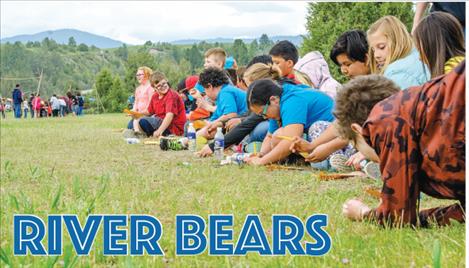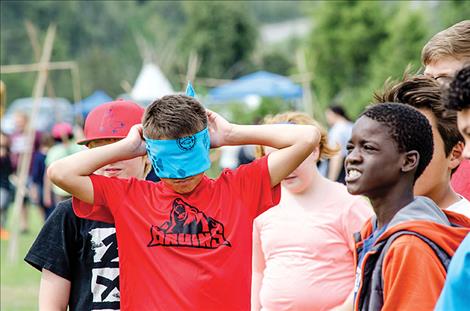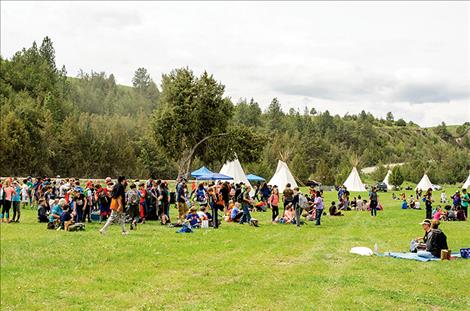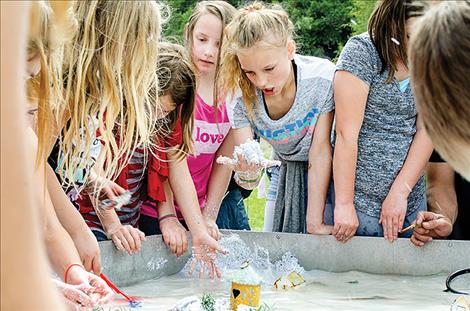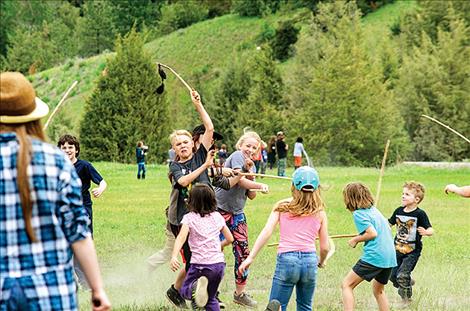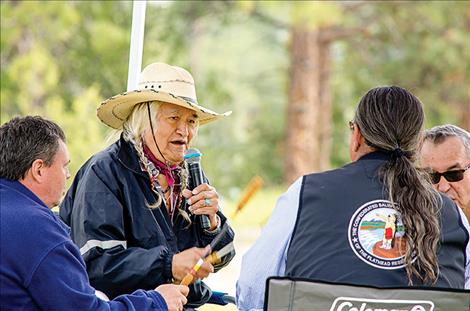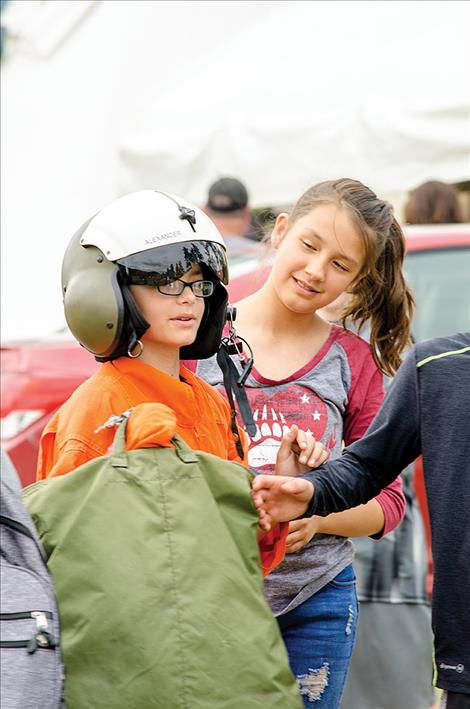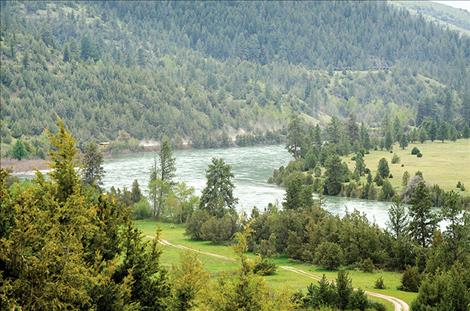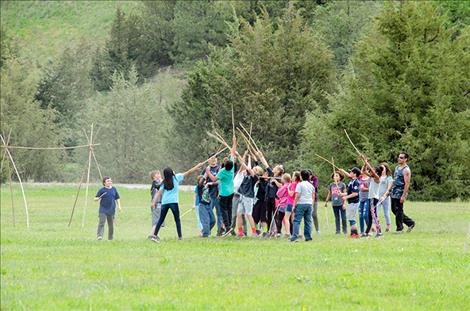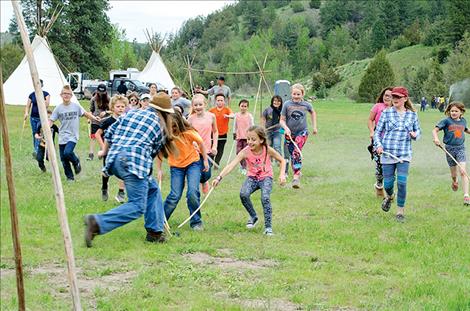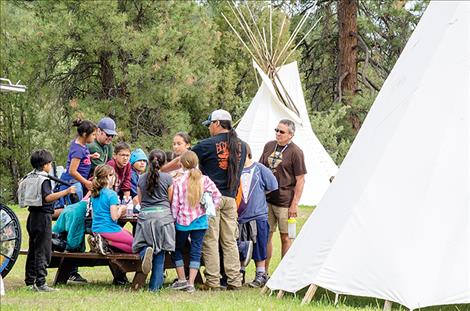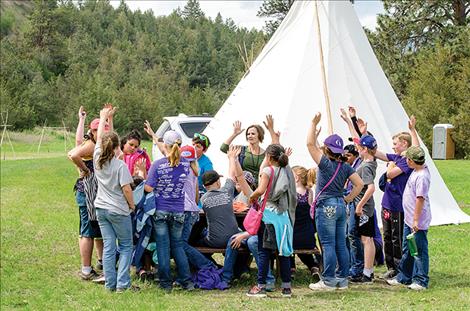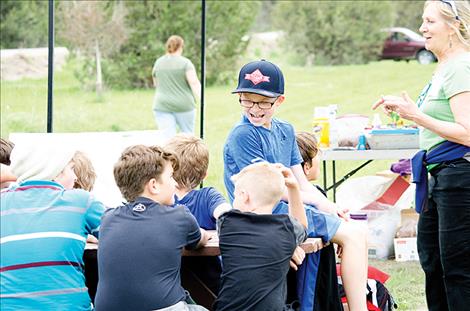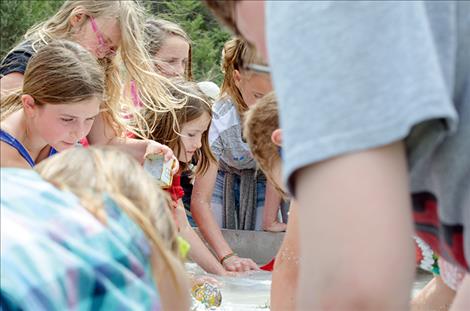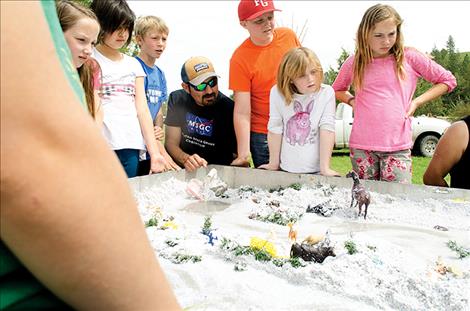Another generation of kids celebrate annual river honoring
Hey savvy news reader! Thanks for choosing local.
You are now reading
1 of 3 free articles.
FLATHEAD RIVER – After a long winter, hundreds of fourth and fifth grade students got a chance to experience an outdoor classroom on a warm afternoon along the Flathead River for the 32nd annual River Honoring.
“It’s really interesting all the stuff they have out here,” said Gordon Stewart, 11. “I’ve learned that there are lots of jobs in nature like the people that measure the water with different tools. I also liked the station where they tell you how stuff was used in the old days like the buffalo bladder was used to carry water.”
The children arrived in buses on either Tuesday or Wednesday (about 500 each day) to learn about the many aspects of the river including wildlife, pollution, invasive species, culture, and they played the native game of double ball.
Twenty-two teepees were set up at different stations along the river. Instead of the usual classroom bells, Stipn Small Salmon and others played a traditional drum each time the students needed to move to a new station.
The Confederated Salish and Kootenai Tribes hosted the event for 1,000 school children from communities on and off the Flathead Indian Reservation. On Monday, adults attended the opening ceremony to honor Mary Jane Charlo for her cultural contributions and work with tribal languages. Janene Lichtenberg was also honored for her work at the Salish Kootenai College and as a wildlife biologist.
Germaine White, CSKT Natural Resource Department information and education manager, said a hands-on approach to learning about the river creates lasting memories.
“We hope the next generation develops a sense of stewardship for the river by learning how unique and precious it is, and we think the best way to do that is for them to see it and engage their senses,” she said.
At one of the stations, Salish Kootenai College hydrology student Tyrel Fenner stood in front of a modified trailer with an edged tabletop where sand was pushed together to look like the banks of two different rivers. One of the rivers formed a straight channel and the other wound and meandered. Before he turned on a faucet to replicate the flow of river water, he talked about the river honoring.
“This is about respecting the land, the wildlife and the ecosystem,” he said. “The elders tell us that those things were here first, so we need to honor them. Water is life and the main driver of geological forces. We ourselves are 70 percent water, so we need to keep water healthy.”
CSKT Tribal Game Wardens Travis Arlee and Brandon Couture asked the students to pretend like they were bears at another station. It was explained that there are many animals on the reservation, but the black bear gets the most attention from game wardens, so they wanted to inform the children about the importance of picking up garbage and any human related bear attractants. The kids learned that bears are always looking for food.
Couture started out with a story: “Once upon a time there was a curious bear that got close to a porcupine. He got a face full of quills and ended up blind, but he survived, so one of the bears today needs to wear a blindfold.”
The students pretended to be bears and gather slips of paper from the ground telling them how much food they might have found if they really were bears walking around in nature.
Arlee talked about the real bears on the reservation. One black bear has already been relocated this year from Hot Springs after it ate through the floor of an old trailer to get to some popcorn. The bear had to be pulled out of the trailer and transported to a new location.
Evan Smith, CSKT wetland coordinator, stood at another station where kids learned how pollution seeps into water. Dennis Lichtenberg worked with him to teach kids the importance of wetlands. They provide clean water, prevent flooding, and create wildlife habitat, he said.
CSKT Wildlife Biologists Whisper Camel-Means and Stephanie Gillin showed the kids several bird species that utilize riparian areas along the river. Gillin also talked about the landscape: “We just switched from winter to summer, so the river is moving really fast and those riparian areas hold the banks in and prevent flooding.”
Deb Fassnacht, Watershed Education Network director, talked about how water in one area moves downstream and affects different places. She said the Flathead River is a protected natural resource. “From time immemorial tribal people have taken care of the river,” she said. “And it’s important to continue to take care of it.”















